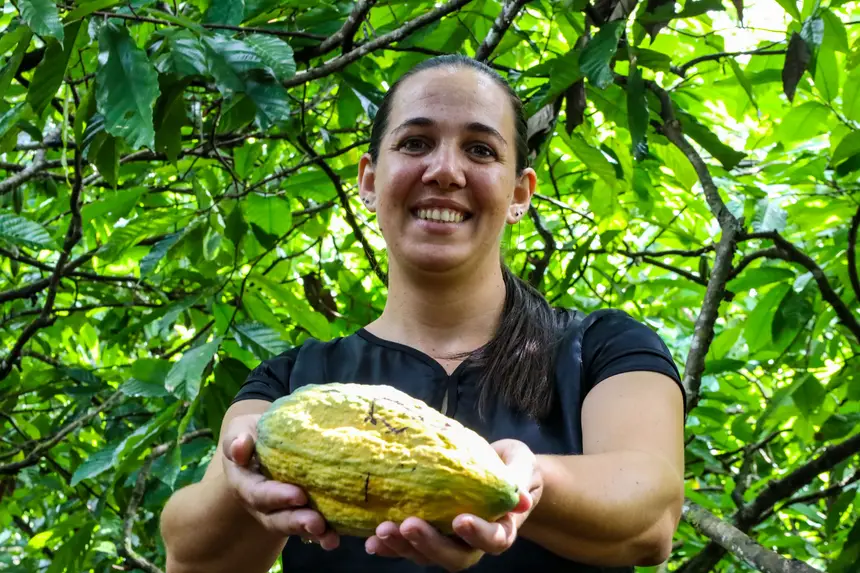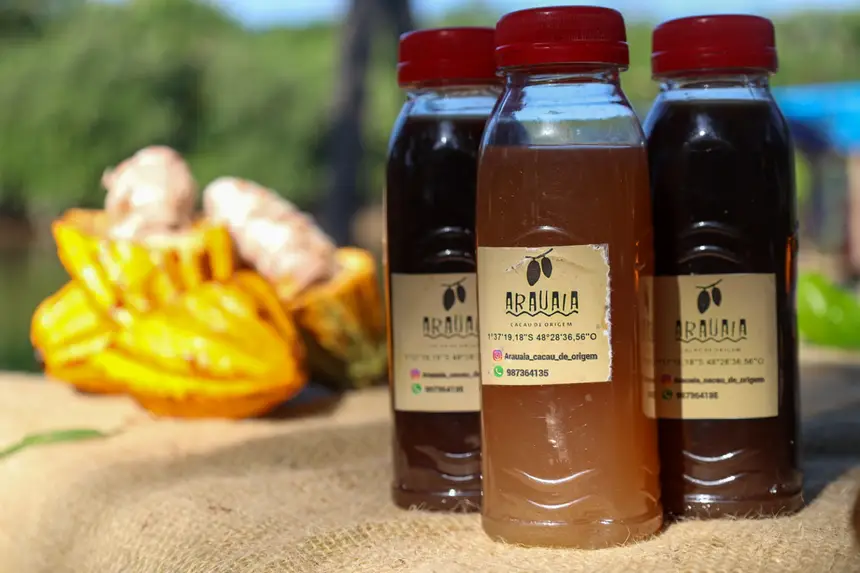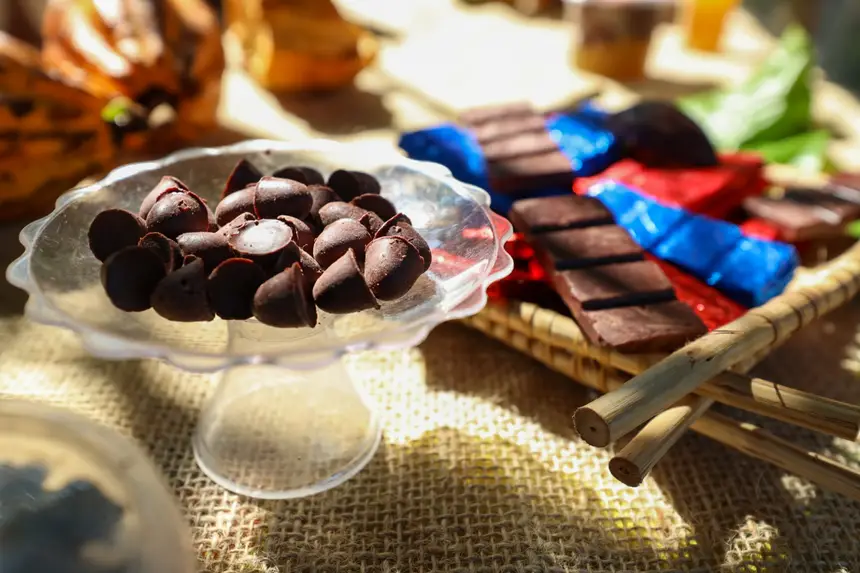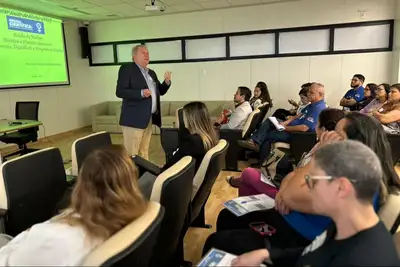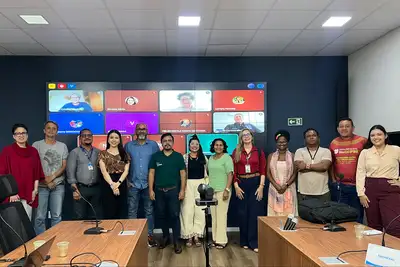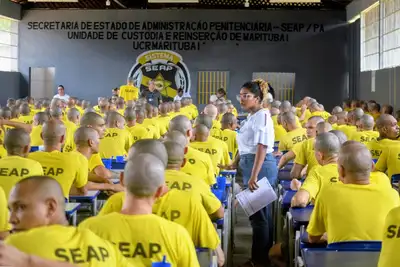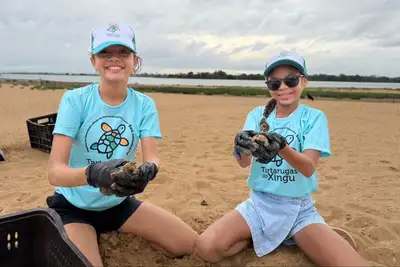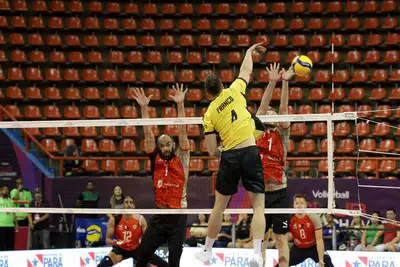Pará has the highest cocoa productivity in the world and celebrates the strength of the sustainable chain
Highlighting cultivation in agroforestry systems, the State surpasses national and international averages and promotes a fair to value local production
Pará continues to lead as a global reference in cocoa production cultivated in agroforestry systems (SAF). The State not only consolidates itself as the largest producer in Brazil but also boasts the highest average productivity per hectare in the world, according to data from the annual crop forecast report prepared in partnership by the Executive Commission of the Cocoa Crop Plan (Ceplac) and the Secretary of Agricultural Development and Fisheries (Sedap). The complete document can be accessed on the secretary's website.
Currently, Pará's productivity reaches 847 kg per hectare, surpassing both the national average of 483 kg/ha and that of the African continent, the largest global producer, with an average of 500 kg/ha. In the municipality of Medicilândia, in the southwest of the State, this number is even more impressive: 1,190 kg/ha, making the municipality the largest producer of cocoa beans in the country.
Located in the Xingu Integration Region, Medicilândia is recognized for its fertile soil — the so-called "purple earth" — and for the cultivation that borders BR-230 (Transamazon Highway), the geographical axis of the largest cocoa production in Pará soil. The region's success is largely due to the adoption of SAF, which combines agricultural production with environmental recovery.
According to agronomist Ivaldo Santana, coordinator of the Cocoa Productive Chain Development Program (Procacau), Pará's differential goes beyond the numbers. "Our average is up there compared to other states and producing countries. This is great for the producer, as it means producing more in a smaller area," he explained.
For comparison, Bahia, which led national production until 2016, uses 425 thousand hectares to cultivate cocoa. Pará, with 169,655 hectares planted, achieves much higher productivity results.
Government initiatives value cocoa cultivation
The Government of Pará, through its specialized agencies, has been adopting a series of initiatives to boost the agricultural sector, with an emphasis on valuing cocoa cultivation. Among the main fronts are inspections on rural properties, sanitary education campaigns, monitoring of agricultural traffic, and systematic actions for the prevention and control of pests and diseases, conducted by the State Agricultural Defense Agency of Pará (Adepará).
In addition, the State actively participates in projects aimed at the internationalization of Pará's cocoa beans, as well as in mapping and monitoring arable areas, through the State Secretary of Agricultural Development and Fisheries (Sedap), which uses remote sensing technologies with high-resolution images.
Sedap also reinforces its support for the productive chain through the Cocoa Cultivation Productive Chain Development Program in Pará (Procacau), with the transfer of resources to institutions that provide technical assistance, hybrid seed production, and direct support to farmers. The strategy strengthens the productive base and ensures the sustainability and competitiveness of Pará's cocoa in the global market.
In 2025, Adepará launched the project "Protection and strengthening of Pará's cocoa cultivation, prevention and combat to Moniliasis at the borders of the State," approved by the Management Council of the Cocoa Cultivation Support Fund of the State of Pará (Funcacau). The initiative provides for training and preventive measures against moniliasis, one of the most severe threats to cocoa production.
Environmental recovery with economic return
Another highlight of cocoa production in Pará is its role in the recovery of degraded areas. In just the last 17 years, the agroforestry system with cocoa has allowed for the recovery of 229 thousand hectares. Being a crop that develops under shade, cocoa is ideal for reforesting anthropized areas, as Santana emphasizes.
An example of this preservation using cocoa can be seen in the municipality of Acará, where a group of women called the "Guardians of the Forest" has come together to generate income and protect the forest. Diana Gemaque, a member of the "Guardians of Cocoa," an initiative that has brought together a group of riverside women from the Acará-Açu community for three years, works with native cocoa and, as the group's name suggests, the work focuses on combining forest preservation with income generation, through encouraging activities such as chocolate making and also handicrafts using raw materials from the forest.
"We are encouraging not only women but also other young people to work with native cocoa, that from the floodplain region. It is a group that helps develop other work in the community. We take this cocoa from nature, go through the entire fermentation process until we reach chocolate," she details.
An example of valuing cocoa that comes from the agroforestry system is from producer Francisco Sakaguchi, who has been cultivating cocoa in Tomé-Açu (northeast Pará) for 50 years. The fruit comes from a system he created in the municipality known as "Safta" (Forest System of Tomé-Açu). The farmer recalls that the work is a result of the legacy left by his father, Noboru Sakaguchi, who, at the beginning of Japanese immigration, invested in cocoa.
Francisco remembers that cocoa was part of the set of projects of Japanese immigration. Initially met with resistance, as farmers did not have knowledge of cocoa-related technologies, the crop ended up proliferating starting in the 1970s, after the decimation of pepper plantations due to fusariosis.
"My father believed, and thanks to cocoa, he paid all his debts, and we managed to turn things around; we live and survive from cocoa. It was a legacy left by him," recalls Sakaguchi.


